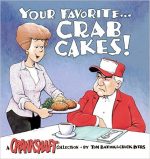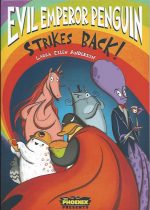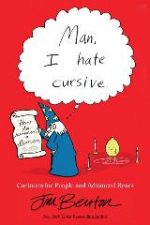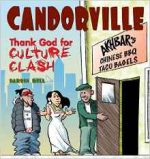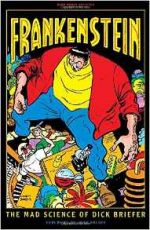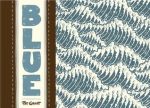
By Carlos Trillo & Eduardo Risso, translated by Zeljko Medic (Dark Horse/SAF Comics)
ISBN: 978-1616554477(HC)Â Â Â Â Â Â Â Â Â Â Â Â eISBN: 978-1-62115-916-2
Dimensions: 221 x 22 x 283 mm
If you like a whiff of tongue in cheek whimsy with your fantastic fairytales you might want to take a look at this superb treat from prolific and much-missed Argentinean journalist/comics writer Carlos Trillo (Topo Gigio, Alvar Mayor, El Loco Chávez, Peter Kampf, Cyber Six, Point de rupture) and terrifyingly versatile illustrator Eduardo Risso (100 Bullets, Jonny Double, Parque Chas, Fulù, Simon, Boy Vampire), starring an affable boy acrobat and a tempestuous little princess.
Los misterios de la Luna roja was originally released as a quartet of comics between 1997 and 1998 by Ervin Rustemagić’s Balkan publishing powerhouse Strip Art Features and appears compiled in this stunning translated hardback thanks to Dark Horse Comics.
Kicking off with scene-setting epic ‘Bran the Invisible’ the supremely wry and deftly comedic action opens as junior tumbler Antolin and his showbiz mentors Crocker and Theo fetch up their travelling show in the extremely depressed and downhearted land of Burien.
Unable to raise a single smile or any approbation the lad soon learns that the kingdom is in mourning. Burien’s Lord and defender has been stricken with grief since his wife Tyl died. Moreover, their daughter Moon is both bonkers and prone to violence. She also talks to (shouts at and fights with) an invisible friend…
However after encountering the red-haired daughter of the despondent widower, Antolin is quickly forced to conclude that she’s not crazy at all…
His first clue is that unseen Bran apparently predicted the acrobat’s arrival and that the orphan boy would help Red Moon save the land. The clincher, though, is that something undetectable keeps hitting him.
There’s no time to waste since the marauding armies of cruel yet cowardly Lord of Leona are already making their uncontested way over the now-undefended borders…
And thus begins an epic confection with crucial quests, astounding odysseys, barbaric villains, fairy queens, witches, dragons and monsters as the valiant children and Bran flee the invasion, uncover the incredible truth of Tyl’s fate and seek to amass a meagre but prophesied army of incredible individuals to rescue Burien and restore Moon’s father to his previous competence and glory…
The saga concludes as Antolin and Red Moon return to the troubled land accompanied by their implausibly unbeatable ‘Attack Circus’ and a few useful Fairy trinkets, resolved to repel the vile invasion and deliver to the sadistic Leona his just deserts. However, that inevitable prospect provides no Happy Ever After for Antolin, who learns in the throes of triumph for Burian that his beloved mentors Theo and Crocker were sent to certain doom by the invaders…
Thus he sets off again, following their trail into ‘The Never Kingdom’ and is soon delighted to see Moon and (not see) Bran have followed their former partner-in-peril. Braving icy wastes, horrific beasts and a population of magically-mutated monsters, the kids challenge the power of wicked crone Panta and consequently discover that the malevolent sorceress and cannibal might perhaps be the long-lost mother of foundling Antolin…
Family feeling doesn’t count for much in Panta’s world, so there are few regrets after Moon discovers the secret of reversing the witch’s transformation spells and starts putting the Never Kingdom to rights…
The fabulously engaging, deliciously trenchant frolics then wrap up with the introduction of insalubrious junior jester Patapaf – and his ventriloquistic stick Pitipif – who play a critical role in the search for ‘The Book of All Dreams’.
With peace and joy restored to his subjects, the widowed Lord of Burian remarries but his new bride is almost immediately abducted by invulnerable ogre Lamermor de Granf to ensure that her husband will duel him for the right to rule Burien…
Outraged Moon can do nothing until she enjoys a fairy-sent dream and learns the smug giant has a hidden weakness. Setting off with Patapaf to find wandering showman Antolin and talking cat Blas Pascual de la Galera the little heroes invade Witch Queen Yaga‘s fortress and subconscious to ferret out the long-occluded means to destroy Lamermor and accidentally acquire an unlikely ally who will ensure their victory and a Happy Ending at last…
Fast, funny and filled with family-friendly action and thrills, Red Moon is a delirious double-edged delight, with knowing sophistication for adult readers working side-by-side with gloriously inventive takes on traditional tale-telling, all adeptly visualised by Risso’s magnificently surreal illustration.
Ideal bedtime reading for anybody and any time.
Red Moon™ & © 2005, 2006, 2014 SAF Comics. All rights reserved.


